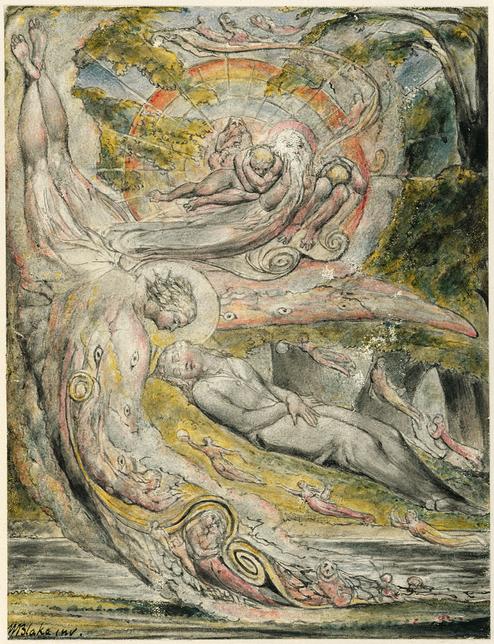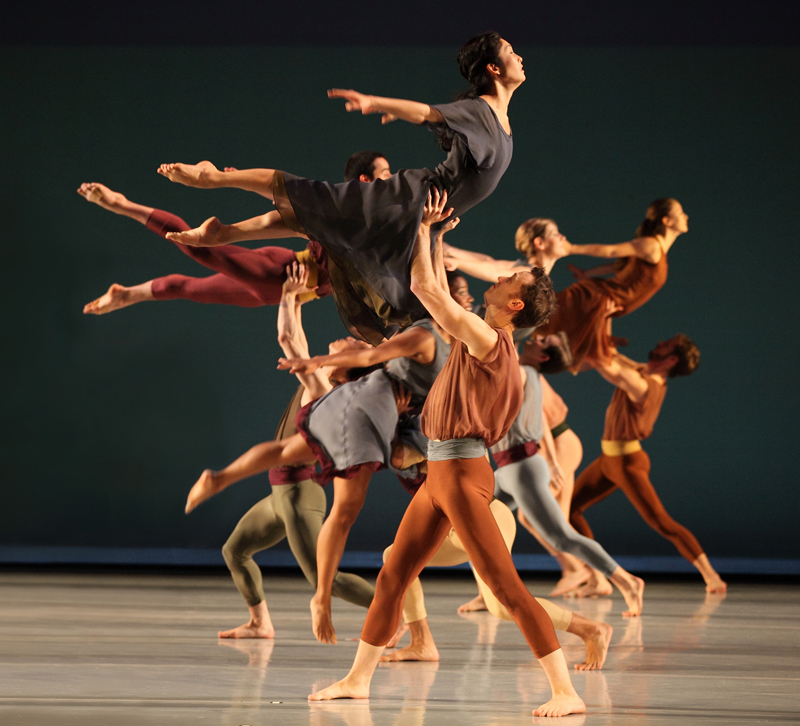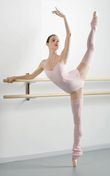The Mark Morris studios are beautiful: light and airy and unfussy—a fitting tribute to the Morris style. And I really enjoyed the BAM performance. I caught Jenn and Spencer and Spring, Spring, Spring—both from 2013. I missed the opening piece on the program because I rehearsed La Sylphide until 7pm at Lincoln Center and couldn’t make to BAM by 7:30. It’s always a gamble for us
Spring, Spring, Spring is Morris’s riff on The Rite of Spring. Stravinsky’s iconic score is refracted into a jazzy cacophony by the musical trio The Bad Plus. Spring, Spring, Spring seemed more like a sendup of Jerome Robbins’s NY Export: Opus Jazz than Nijinksy to me. Morris frequently evokes Robbins in my mind, and I liked his jazz bacchanal better than Robbins’s. I think that Opus Jazz, which was made for a small touring company and tiny venues, gets lost on the huge stage at the David H. Koch Theater. To my mind, it shines best in the film of the same name by Henry Joost and Jody Lee Lipes, which was conceived and produced by my friends Ellen Bar and Sean Suozzi. But anyway, Spring delivered sophisticated syncopation and a go-for-broke energy. Though I was exhausted from my long rehearsal day when I entered the theater, I left feeling rejuvenated.
Best of all is Morris’s L’Allegro, il Penseroso ed il Moderato. What an amazing piece of art! The way the piece deftly handles its source material and its myriad influences—which include 17th Century poetry, Greek mythology, Renaissance painting, and the whole history of dance—is incredible. Also, I don’t usually find that dance performances translate to film very well (unless they are tailor-made for film, like the aforementioned Opus Jazz), but I found the PBS Great Performances recording of L’Allegro very moving. (There is also something about running a high fever that makes one particularly emotional…) It helps too that the Handel score is sublime, and the costumes by Christine Van Loon nod to William Blake’s gorgeous illustrations of Milton’s poetry.
I have loved John Milton’s companion poems, L’Allegro and Il Penseroso ever since I studied them with one of my favorite professors, Frank Boyle, at Fordham several years ago. The poems are essentially about how one looks at life. Milton juxtaposes two personality types, prompting his readers to reflect upon which type they are. In a nutshell: are you contented by the simple pleasures of nature and aesthetic beauty, or do you find quiet contemplation and freedom of thought—however somber a turn your mind may take—to be the ultimate joy. That is a gross oversimplification, but I could write about them for pages if I didn’t generalize. Oh yeah, the poems are also about such trivial matters as the legacies of poetry, philosophy, and mythology! They contain references to Ovid, Johnson, Horace, Shakespeare, Chaucer, Homer, and Donne among others. They are not epic in length like much of Milton’s work, but they certainly pack a punch.
I am not surprised that they inspired Handel to compose and Morris to choreograph. There is such rhythm in Milton’s verse. Also, while both poems portend to be about opposing worldviews, one could argue that they are both ultimately about music. Each calls for music as the highest gratification in its closing lines: the “prophetic strain” of Il Penseroso, the “hidden soul of harmony” in L’Allegro. I think Mark Morris’s astute musicality is the driving force in all of this work; in this respect he perfectly encapsulates Milton’s poetic diptych.
As if by magic, Milton’s poems contain eerily prescient dance references. The poems date from the 1630’s, roughly 200 years before pointe shoes were invented, yet I always picture a ballerina on pointe when I see the famous lines: “Come and trip it as ye go/On the light fantastic toe.” That could be a description of Marie Taglioni in La Sylphide in the 1830’s. Milton seems to have preordained all sorts of modern dance, for that couplet from L’Allegro is also the source of the phrase “to trip the light fantastic” which was appropriated by the disco era since it perfectly described dancing atop psychedelic light panels on dancefloors. The deeply pious Milton would probably weep to know that he was a prophet of John Travolta in Saturday Night Fever rather than of religious reform! “To trip the light fantastic” has been referenced by everyone from Lena Horne and Blondie to Cyndi Lauper and Grace Jones. The world is strange my friends.
Channeling Milton’s uncanny auguries, Mark Morris also taps into many eras and types of dance in his choreography in L’Allegro. There are Grecian processional numbers, athletic jogging, same-sex partnering sections, reverse-gender partnering (a corps of women repeatedly lift a man high aloft in one dance), pageantry and play-acting (there is a fox hunt), and a whole corps of songbirds (male and female) who enact a pluckier, joyous take on Swan Lake. In one repeated motif a group of women run at a group of men and are lifted high in a superman position, but some men have no partner and lift imaginary women. It is such a neat effect, to shift the perspective to the normally invisible partnering.
There are several passages with religious overtones. One, called basilica I think, had a simple backdrop evoking a cathedral (the scenery is by Adrianne Lobel) and consisted of people walking solemnly between imaginary pews. In another part there were two women hoisted into the air like twin Christs on crosses. Morris uses some incredibly provocative imagery but nothing feels contrived or out of place in this work. It is truly a seminal piece of art, 24 dancers in simple colored shifts and bare feet manage to convey the history of humankind in miniature.
The dancers were great. They looked like they took great pleasure in their work and they made me want to dance the piece too. Maile Okamura was especially captivating every time she was onstage (which was often). I look forward to seeing this piece live sometime; I hope it comes to NY again soon. But even in its canned television incarnation it was a godsend last week; it kept me inspired and engaged during my sick funk. My other saving grace during my illness was Donna Tartt’s engaging novel The Goldfinch, which contained a cool shout out to the New York City Ballet!



 RSS Feed
RSS Feed